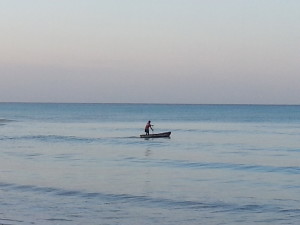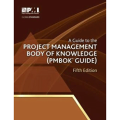
Rolling wave planning is a project management technique that involves more detailed planning for short term than long term work items. As each item is gets closer, it is planned in greater and greater detail. Kind of like surfers who are far more interested in the current wave than the next one (until they get there). If that sounds simple, it is (much simpler than surfing, in my experience). In fact, most people already do it without knowing.
It’s ideal for projects where the path to the finish line is not well defined and prone to change, like designing new technology.
You see, for most people it is intuitive that changes in project scope are far less likely for short term work items than longer term ones. If you’re working on a project report at the beginning of a 12 story building project, the likelihood of changes in the scope of the report are slim compared to the overall project which will end long after the report.
Rolling wave planning, then, is the process of dividing the work breakdown structure into time frames (phases). At the end of each phase, the project manager investigates the work breakdown structure (WBS) and expands it to include more detail for the newest phase.
It is particularly suited to projects where the work involved one phase is highly variable and dependent on the outcome of the previous phase, such as invention projects, or projects that require prototypes. At our engineering company, the bridge projects often have this type of variance because you don’t know what type of structure you’re going to build at the outset – the type of bridge and construction materials (concrete vs. steel etc.) often necessitate large effort on the front end engineering because the cost difference is so big on the back end. But you don’t know at the outset if there is one obvious option or many different ones.
Rolling wave planning takes place in 4 easy steps:
- Create the WBS.
- Divide the project into phases.
- Provide the realistic level of detail for each phase.
- Once the phase is complete, go back to step 1.
Create the WBS
The work breakdown structure is the core around which other project management planning processes takes place. It involves the subdivision of each project deliverable into work items. As a minimum, each work item needs an identification number, description, and responsible team member, but often it is nice to include things like budget, deadline, and task dependencies. Throughout the project, these work items get tracked and progress reported.
 Divide the project into phases
Divide the project into phases
Points where the detailed knowledge of future work items drops off are necessary locations for phase changes. For example, if you’re building a prototype there’s probably some uncertainty as to what the work plan after the prototype is. You don’t really have alot of choice but to end the phase there.
Deliverables also make great phase changes, but any area where multiple tasks converge is also a good spot.
Provide the realistic level of detail for each phase
Obviously the immediate next phase will have the most detail and subsequent phases will have progressively less. The work breakdown structure will contain less items, and the project will be divided into more “major” pieces. This is the essence of rolling wave planning, and we accept this as both necessary and normal.
Once the phase is complete, go back to step 1
There you have it. And if my experience with surfing is any indication, you’ll be enjoying these rolling waves long before the ones in the ocean.
What’s your experience with rolling wave planning? Leave us a note in the comments.











 ROBERTO BROGI says
ROBERTO BROGI says
January 21, 2018 at 2:53 amHi Bernie,
good your article ! Please have you implemented Rolling Wave method in Primavera P6 ? I’m interested in defining the practical use of RW (Work Packages / Planning Packages, etc.) in P6.
Hava you some suggestions ?
Thanks in advance
Roberto Brogi